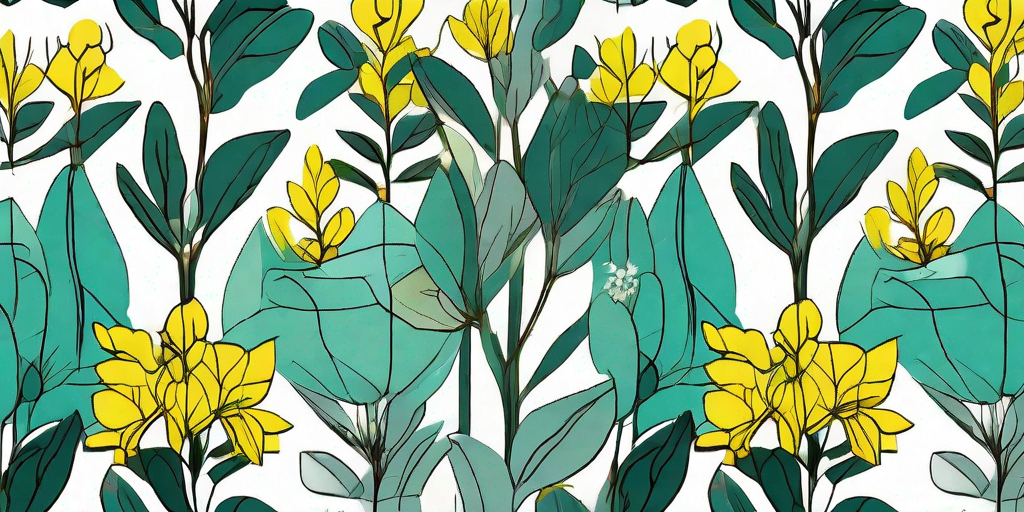
Rhododendrons are the divas of the garden world. They're stunning, they're dramatic, and they're not afraid to let you know when they're not happy. Yellow leaves on your rhododendron? That's the botanical equivalent of a diva's tantrum. But fear not, dear gardener! This guide will help you understand why your rhododendron is throwing a fit and how to restore it to its former glory.
Understanding Your Rhododendron's Tantrum
First things first, let's understand why your rhododendron is turning yellow. It's not just being dramatic for the sake of it. Yellow leaves are a sign that something's not quite right in its world. It's like a toddler with a tummy ache - it can't tell you what's wrong, so it just starts crying. Or in this case, turning yellow.
There are several reasons why your rhododendron might be turning yellow. It could be due to a lack of nutrients, poor soil conditions, or even disease. But don't worry, we're going to tackle each of these issues in turn. So grab your gardening gloves, it's time to play detective!
Diagnosing the Problem
Checking for Nutrient Deficiencies
Rhododendrons are like the supermodels of the plant world - they need a very specific diet to stay looking their best. If they're not getting the right nutrients, they'll let you know by turning yellow. The most common nutrient deficiencies in rhododendrons are nitrogen, iron, and magnesium. So if your rhododendron is looking a bit peaky, it might be time to give it a feed.
But how do you know which nutrient your rhododendron is lacking? Well, each nutrient deficiency has its own tell-tale signs. For example, if the older leaves are turning yellow but the younger ones are still green, it's likely a nitrogen deficiency. If the veins of the leaves are green but the rest of the leaf is yellow, it's probably an iron deficiency. And if the leaf edges are turning yellow and curling, it's likely a magnesium deficiency.
Examining Soil Conditions
Rhododendrons are fussy about their soil. They like it well-drained, acidic, and rich in organic matter. If the soil doesn't meet their high standards, they'll protest by turning yellow. So if you've ruled out nutrient deficiencies, it's time to take a look at the soil.
First, check the pH of the soil. Rhododendrons prefer a pH between 4.5 and 6.0. If the pH is too high, the soil is too alkaline and the rhododendron can't absorb the nutrients it needs. If the pH is too low, the soil is too acidic and the rhododendron can become nutrient toxic.
Looking for Disease
Finally, if you've ruled out nutrient deficiencies and soil conditions, it's time to consider disease. Rhododendrons can be affected by a number of diseases, including root rot, leaf spot, and wilt. These diseases can cause the leaves to turn yellow and drop off.
Check the leaves, stems, and roots for signs of disease. Look for spots, discoloration, or a foul smell. If you suspect disease, it's best to consult a professional or your local extension service for advice.
Reviving Your Rhododendron
Feeding Your Rhododendron
Once you've diagnosed the problem, it's time to get your rhododendron back on track. If it's a nutrient deficiency, you'll need to give your rhododendron a feed. Use a fertilizer specifically designed for acid-loving plants, and follow the instructions on the packet.
Remember, it's better to under-feed than over-feed. Too much fertilizer can burn the roots and cause more harm than good. And always water thoroughly after feeding to help the nutrients soak in.
Improving Soil Conditions
If the problem is the soil, you'll need to make some adjustments. If the soil is too alkaline, you can lower the pH by adding sulfur or a soil acidifier. If the soil is too acidic, you can raise the pH by adding lime. And if the soil is poorly drained or lacking in organic matter, you can improve it by adding compost or well-rotted manure.
Remember, changing the soil conditions is a slow process. It can take several months to see a difference. But be patient, your rhododendron will thank you for it!
Treating Disease
If your rhododendron has a disease, you'll need to treat it promptly. Depending on the disease, this might involve pruning out the affected parts, applying a fungicide, or in severe cases, removing the plant entirely to prevent the disease from spreading.
Always clean your tools thoroughly after working with a diseased plant to prevent the disease from spreading. And remember, prevention is better than cure. Keep your rhododendron healthy by providing the right conditions and regular care, and it's less likely to succumb to disease.
FAQs
- Why are my rhododendron leaves turning yellow?
- Yellow leaves on a rhododendron can be a sign of nutrient deficiencies, poor soil conditions, or disease.
- How can I improve the soil for my rhododendron?
- You can improve the soil by adjusting the pH, improving drainage, and adding organic matter.
- How can I prevent disease in my rhododendron?
- Prevent disease by providing the right conditions, regular care, and cleaning your tools thoroughly after working with a diseased plant.
Conclusion
So there you have it, the ultimate guide to reviving your rhododendron's beauty. Remember, your rhododendron is a diva. It demands the best conditions and the right care. But give it what it needs, and it will reward you with a stunning performance. So say goodbye to yellow leaves, and hello to a happy, healthy rhododendron!















